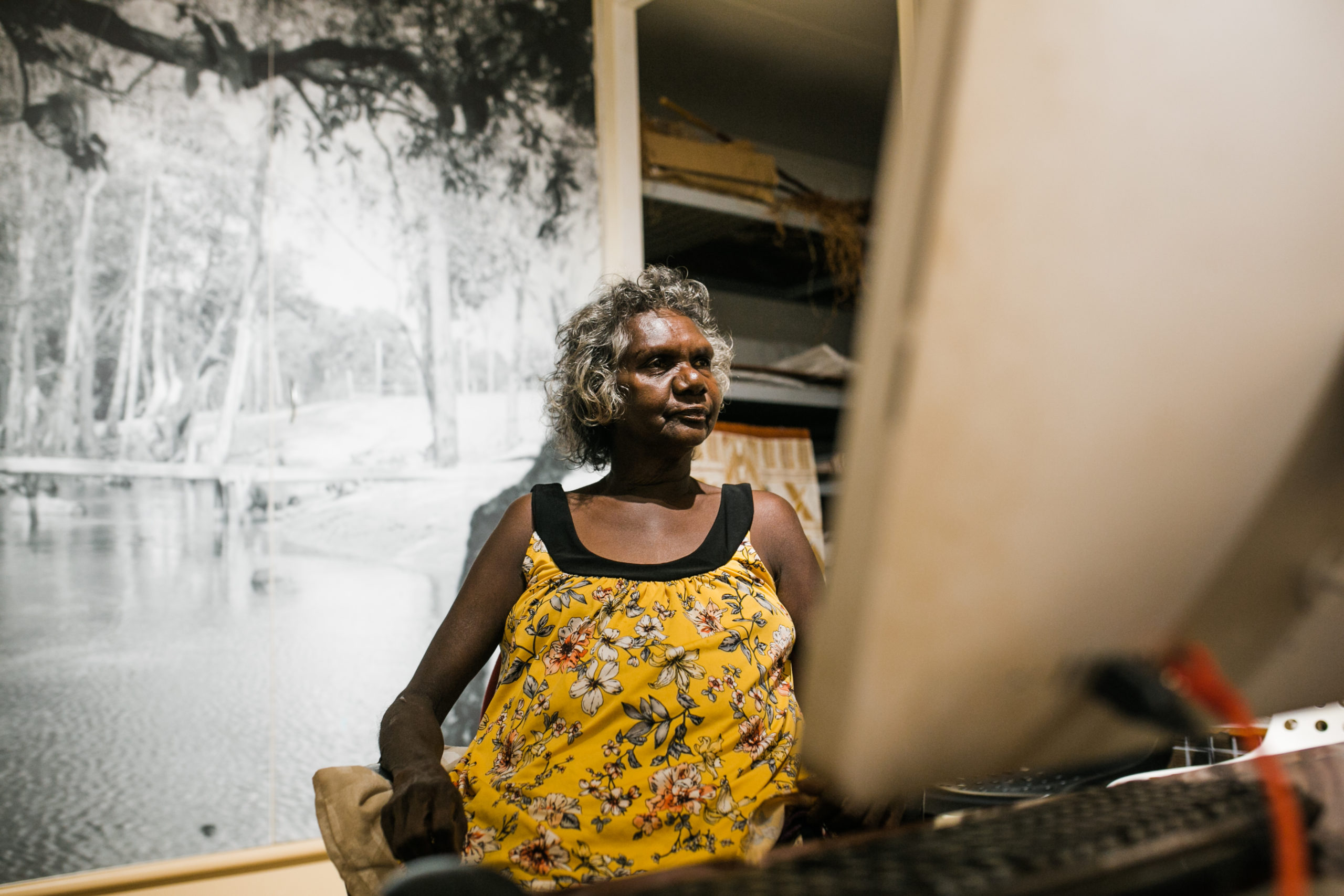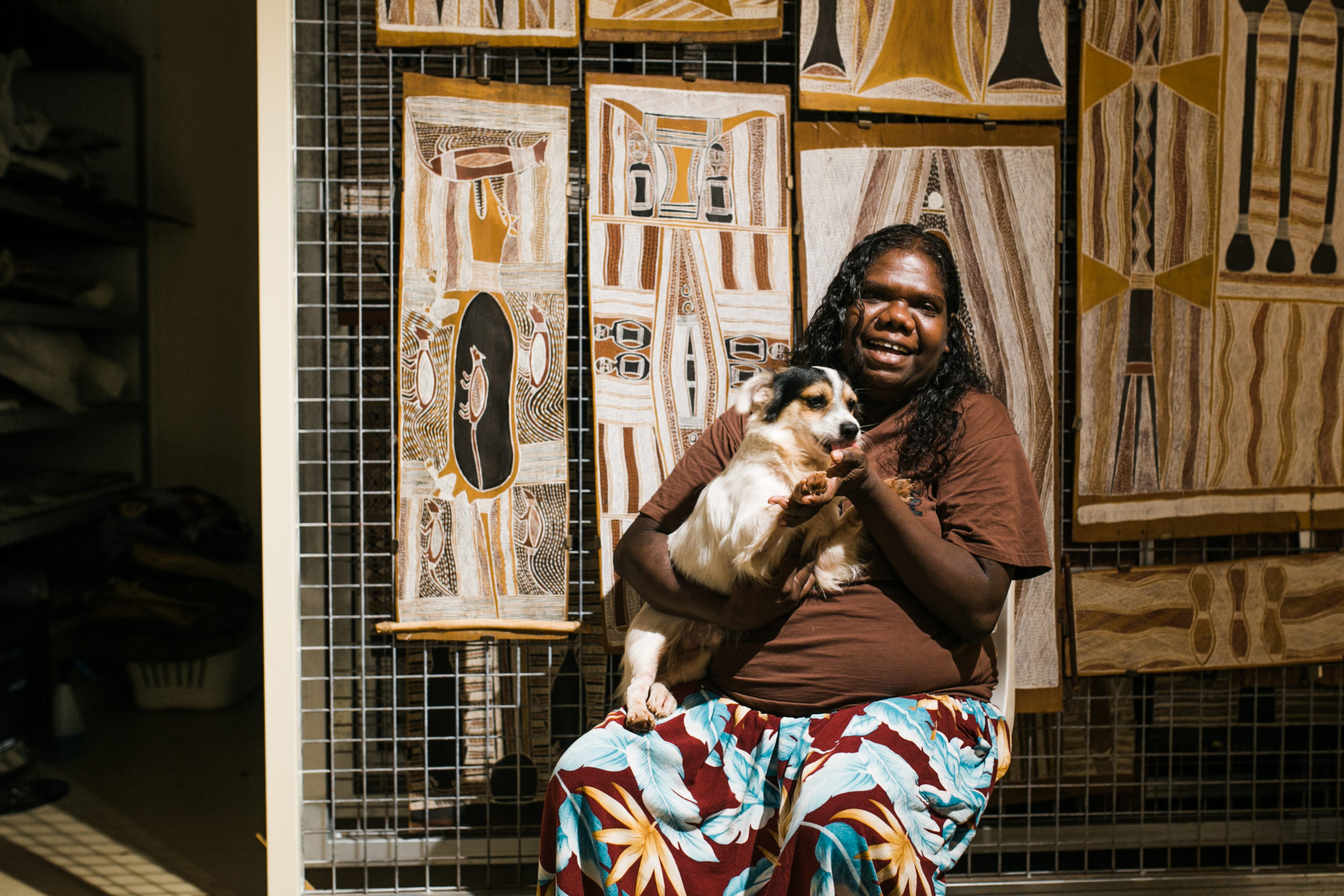Back in 2015, when Djambawa Marawili first said he wanted an exhibition that told “the whole story of Yolŋu bark painting” it immediately forced us to think about the question of time. What kind of timeline do you need to tell this “whole story”?
On the one hand, the answer to this question is easy. As co-curator Wukuṉ Waṉambi notes in the exhibition catalog, “All the stories start with Djan’kawu and Barama. That is where the story really begins.” From the onset, Waṉambi and the other Yolŋu curators of the exhibition knew they did not want the exhibition to be arranged chronologically. Wukuṉ noted, “Whether I see an old painting or a new one, it’s no different. The pathway is the same. The songline. The pattern. The story. The place. The wäŋa (homeland)— the place where it came from. It’s all the same.”
At the same time, Wukuṉ and Djambawa knew that that they wanted to show the history of bark painting and the legacy left by previous generations of artists. This was clearly part of the responsibility that Wukuṉ saw in his role as curator. Speaking of the knowledge held in the old paintings, he said: “It is what our old people have given us. And here we are, we came [to the United States] with the same load on our back and returned names to the paintings.” Part of researching the exhibition was showing this continuity. Wukun notes: “ I’ve learned a lot from it because it made me think about where these paintings are from and who they belong to, from the past until today, yes indeed. Through collaborating to find out about these paintings, from long ago up to the present, it is clear now, isn’t it, where these powerful paintings come from?”


Telling this “whole story” meant going back to July 1935, when the great Djapu’ leader Woŋgu Munuŋgurr painted his first work for anthropologist Donald Thomson. This might have given us a clear starting point and the date range from which the subtitle “Eight Decades of Aboriginal Australian Bark Painting from Yirrkala” was derived. But translating this subtitle into Yolŋu Matha was not quite as straightforward. After much deliberation, Dela Munuŋgurr and Bulmirri Yunupingu, who have been the lead translators on the project, suggested: Waltjaṉ ga Waltjaṉbuy Yolŋuwu Miny’tji Yirrkalawuy, which translates literally as “many monsoonal rains of Yolŋu bark painting from Yirrkala.” It was a perfect translation, capturing a seasonal rather than linear sense of time, embodying the sense that these paintings belong in an unfolding trajectory in which County is the constant. As Wukuṉ notes, “whatever you change [in your art], your mind remains in your wäŋa. There’s nothing there that can really change.”